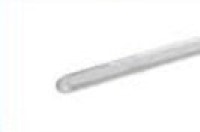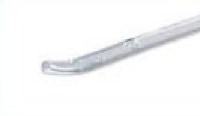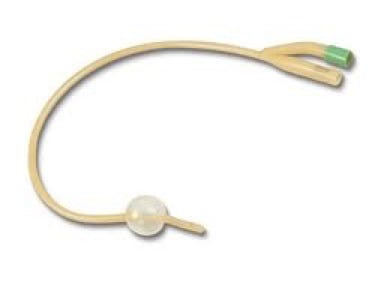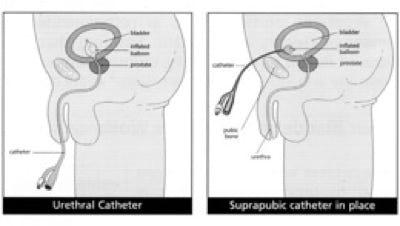TYPES OF INTERMITTENT AND FOLEY CATHETERS
WHAT IS A URINARY CATHETER?
Webster’s Online Dictionary defines a catheter as “...a tubular medical device for insertion into canals, vessels, passageways or body cavities usually to permit injection or withdrawal of fluids or to keep passages open...” For the purpose of this web site we will discuss urinary catheters that are inserted into the bladder to drain urine. The catheter can also be used to irrigate the bladder with a sterile solution or to introduce medications or antibiotics into the bladder.
There are different types and sizes of urinary catheters that we will discuss here. They are Foley catheters and intermittent catheters. Both of those catheters come in male, female and pediatric (childrens’) lengths and different outside diameters, which is referred to as the “French” (fr or ch) size, which is measured in millimeters. The larger the diameter, the larger the size number. Catheters come with different types of tips that insert into the bladder as well, such as straight tips, whistle tips, tieman tips and coude tips. Below, you will find pictures of each type of tip and descriptions of what these tips would be used for.
FOLEY CATHETER
The Foley catheter is used when continuous drainage of urine is necessary. There are a number of reasons a Foley may be used, ranging from allowing tissue to heal from surgery (such as in prostate removal), when someone may not be able to perform intermittent self catheterization to empty the bladder (such as in high quadriplegia), or as a management tool for incontinence when the intention is to avoid the use of diapers or pads.
As you can see from the picture, the Foley catheter has some unique parts. In the top right of the picture, you can see two ports. The port that is toward the bottom is where you attach tubing that will attach to a leg bag. The other port is where a syringe of sterile water will be inserted to fill the balloon, which you see at the bottom of the picture at the other end of the catheter. Once the catheter is inserted through the urethra (or abdomen in the case of supra-pubic catheterization), the syringe is inserted into the syringe port and sterile water or saline is pushed into the balloon, so the catheter is held in the bladder for as long as the balloon is inflated. When the catheter needs to be removed, the syringe is again inserted and the fluid is withdrawn to deflate the catheter so it can be removed. To the right of the balloon in the picture (toward the end of the catheter) are the drainage holes that urine passes through to exit the bladder into a collection device.
The picture on the left shows the foley catheter inserted through the urethra into the bladder in the usual fashion. If the urethra is unable to be used for catheter insertion, a suprapubic catheter will be inserted. This is a catheter surgically inserted through the abdominal wall, through the bladder wall, into the bladder, as shown in the picture on the right..
INTERMITTENT CATHETER
The Intermittent Catheter is a catheter that is used when occasional or scheduled drainage of urine from the bladder is needed. Unlike the Foley Catheter above, this catheter is meant to be inserted to drain urine and then removed when urine drainage is complete. As you can see in the picture, unlike the Foley Catheter, the Intermittent Catheter has no balloon on the end, and it is just a straight tube with no additional port on the opposite end. Urine just drains straight through the tube. Intermittent Catheters come in three different lengths, a 16” length for adult males, a 6” length for females, and a 10” length for male children. Females CAN use the 16” catheter, but the length is not needed due to the shortness of the female urethra.
As you can see in the picture, there is a connector, or funnel, on the end of the catheter. This connector can be used to attach a urine collection bag if one needs to catch their urine for volume measurement or for catheterizing when in a wheelchair or bed. This connector can also be used to attach a syringe for injecting medications into the bladder or flushing the bladder with liquid. Another use for this connector is for connecting a bulb syringe to suck urine from the bladder, when complete emptying does not occur from just inserting the catheter.
CATHETER TIPS
As mentioned above, both foley and intermittent catheters come with a number of different tip types. These tips are shaped differently and each type of tip has a different purpose. We will discuss the different tip types and what they’re for in a different section. For now, the two main types of Intermittent and Foley catheters are:
This is a picture of a straight tipped catheter. The straight Foley or Intermittent catheter is used when there are no urological complications such as enlarged prostate or urethral stricture (narrowing). Straight catheters are also used when catheterizing through the abdomen, whether that be a suprapubic foley or intermittent catheterization through a surgically created stoma.
This is a picture of a coude catheter. The coude catheter is usually used to get around obstructions in the urethra, such as enlarged prostates and urethral stricture (narrowing). Much care should be used when using a coude catheter, as the tip can scape or punch through the urethral wall causing injury if used incorrectly.
In future sections, we will look at the different catheter tip types, the process of catheterization and different types of catheters, such as pre-lubricated catheters, hydrophilic catheters and standard catheters that need to be lubricated.
Back to top






